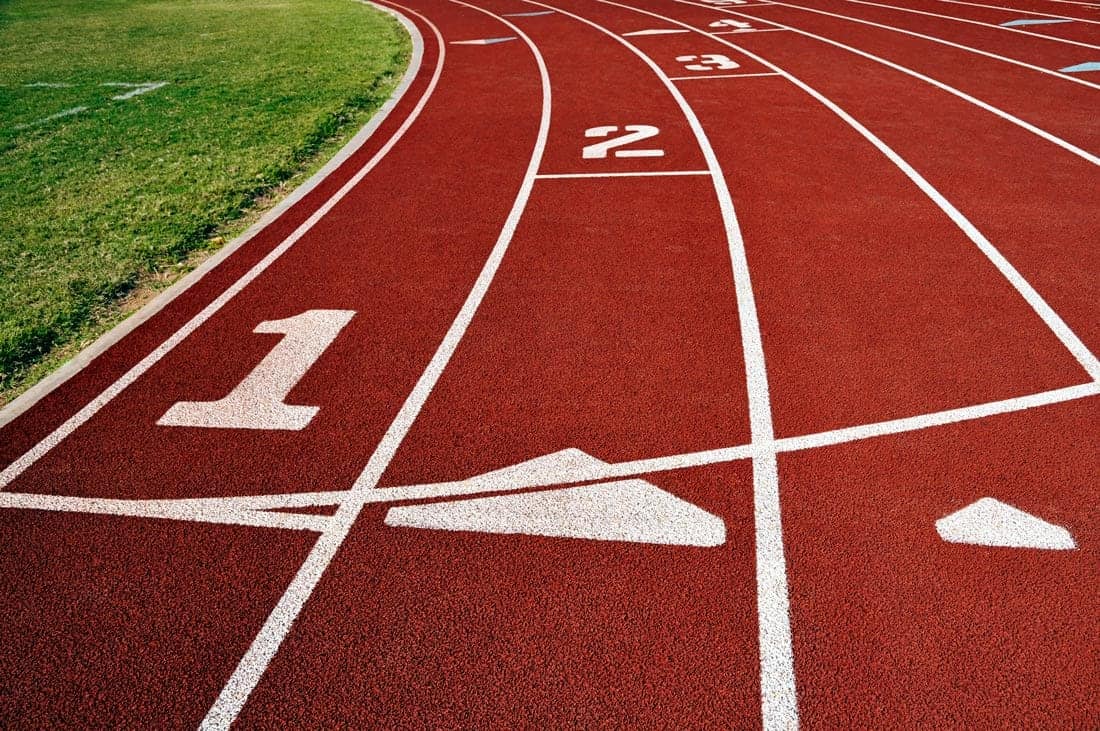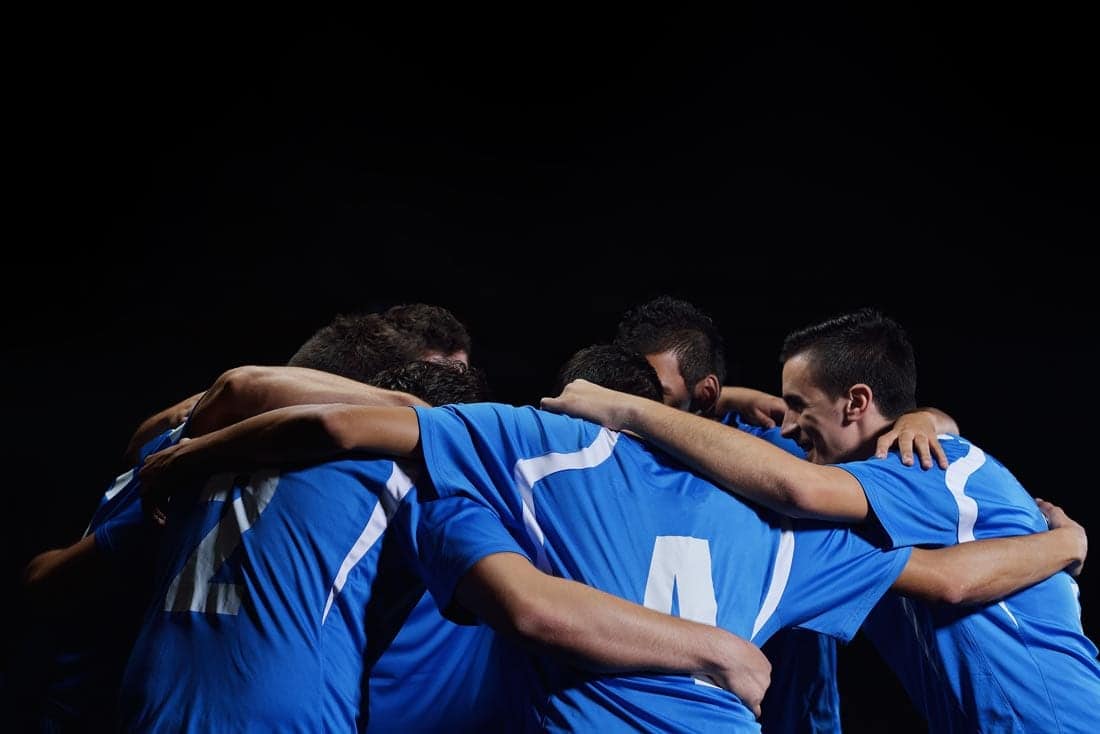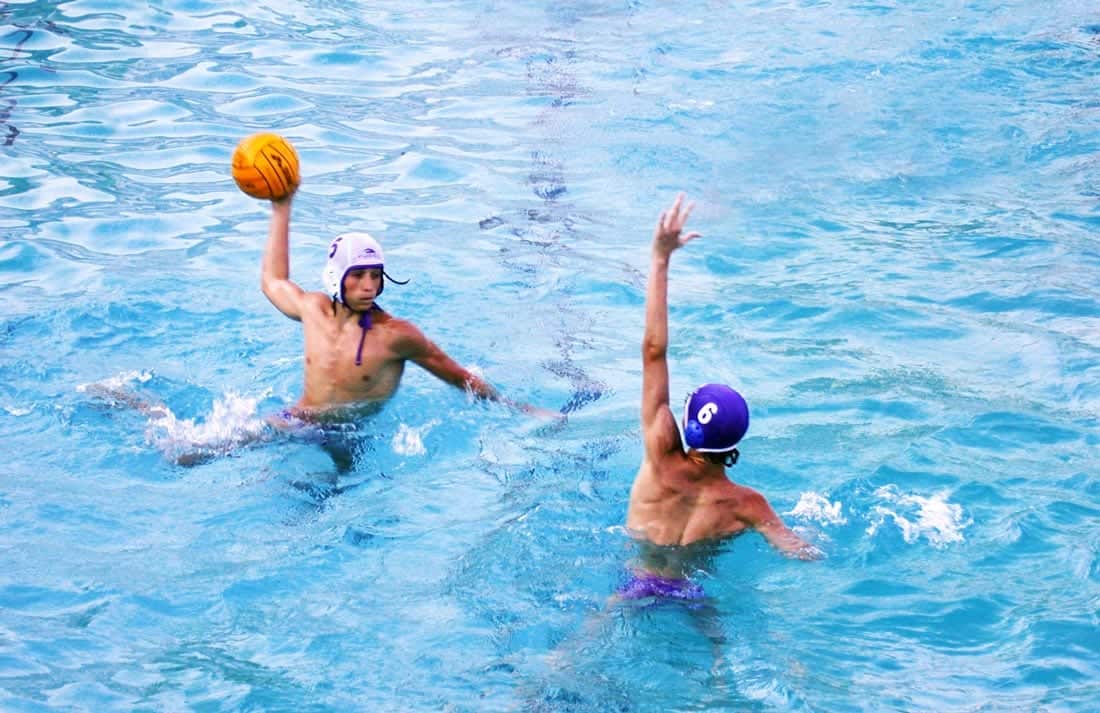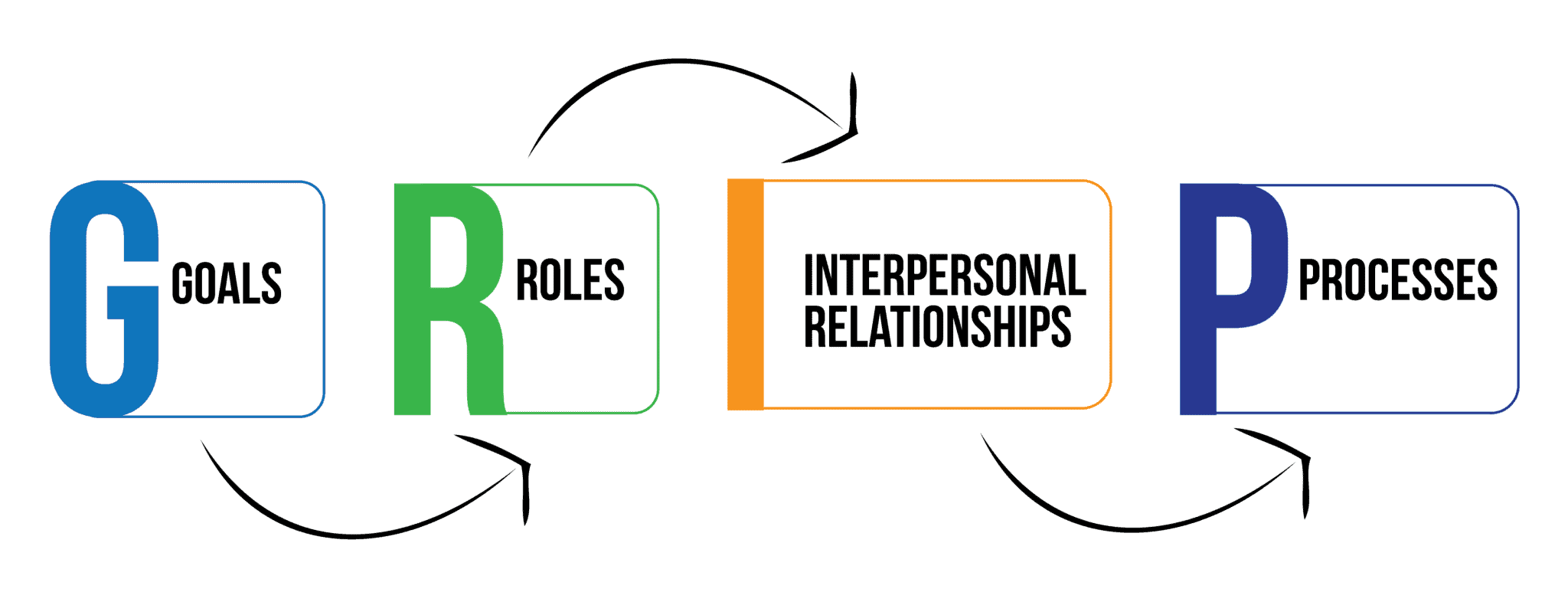By Bo Hanson – 4x Olympian, Coaching Consultant & Director of Athlete Assessments
Pre-season is a hectic time of year. There is usually a long list of important items to organize and sometimes things can slip through the cracks. No doubt, like most programs, you have athletes who have left and new athletes arriving. The induction of a new athlete into your program is something you need to get 100% right. Being strategic about your athlete induction program helps you to set the foundation for your athlete joining your program (and re-establish returning athletes).
‘Prevention is always better than the cure’ – so it is important to get the most out of this critical time, and set in motion the measures for prevention rather than resorting to ‘cures’ later.
Luckily we have compiled a list of seven things to get right to ensure that your athlete starts on the right foot in your program. These points are not rocket science – but ensuring you cover each point in the checklist allows you to be an expert in this area.

1) Athlete Induction: Safety First
Safety is one of the obvious topics to cover in an athlete induction. Every organization, whether sporting or not, needs clear and strong safety policies and procedures. It is important you can explain these policies to your new team members. At a basic standard, cover essential safety and emergency procedures for the training facility and club / organization. This includes the logistical arrangements in case of emergency or injury to the athlete. It includes who to go to within the organization to help.
However, sometimes it is forgotten that both the physical AND emotional safety of the athlete should be addressed. The rationale for this is clear, as in the hierarchy of needs; safety is a low level motivational need. This means that for an athlete to achieve a high level performance, they must first feel that their safety needs are being met. Once you remove the perception of safety, an athlete will struggle to produce a high level performance.
Physical and Emotional Safety – What’s the difference?
Physical Safety includes how injuries, including athlete fatigue, are managed. Are they treated with care and a high level of concern? To what degree is athlete fatigue managed? Are athletes’ concerns listened to? Are training sessions adjusted to manage the athletes’ fatigue levels? Physical safety is often more easily identified and catered for than emotional safety.
Emotional safety means being in an environment where you are able to act, think and feel without fear. Emotional safety is a measure of how the athletes are spoken to, treated fairly and with respect, feel cared about, praised and their self-esteem is supported and developed or not. It is demonstrated by ensuring that the emotional well being of every member within and around the team is an underlying priority. While it may not be something that your athletes consciously think about, it is critical to your program. Athletes must feel as though they are physically and emotionally safe in order to perform at their best. Every Program must have a set of grievance procedures should the athletes or other staff members feel they need to present a difficult issue to management, especially if the issue is with the coach or other staff member associated with the team.
Every Program must have a set of grievance procedures should the athletes or other staff members feel they need to present a difficult issue to management, especially if the issue is with the coach or other staff member associated with the team.
BEST PRACTICE
Your induction program needs to demonstrate a high level of commitment to ensure athlete safety. This may include:
- Treating the athlete as a ‘whole’ person and welcoming them into your ‘Team Family’ thereby creating a sense of security.
- Clear communication about grievance policy and procedures and how they can access assistance, should the need arise.
- Clear avenues about how to get assistance from your organization about any part of their life.
2) Athlete Induction: Location, Location, Location
Location is another topic you should cover when inducting an athlete into your Program. At a basic standard, provide the Training Facility Tour including site layout, training rooms, field induction, locker room and personal space allocation, where to access nutritional food and drink, transport and parking options, and other important locations.

BEST PRACTICE
Being strategic about the tour can transform what can be a ‘walk around’ to a deliberate high-value experience. Here are some suggestions:
- Ensure the person providing the ‘tour’ has an excellent knowledge of the facilities, its history, and significance and why it’s important for the athletes to know how to use, respect and access each area.
- Use ‘story telling’ to keep the tour engaging. This will also help the club become something the athletes will want to be a part of, contribute to, respect and value.
- Identify key symbols and incorporate team culture messages. (More on this later…)
3) Athlete Induction: The ‘Who we are’ and ‘Who’s who’
When inducting athletes into your organization, introducing those they will come into immediate contact with is not enough. Athletes should receive a whole package of information about their new organization. This can contain the club and organizational history including key historical people, the club and organizational structure (including key personnel –names, roles, responsibilities and contact details), and the Mission Statement of the Organization.

BEST PRACTICE
Importantly, provide a basic communications overview, identifying who the athlete goes to for various requests or issues. Use a handy card or mini-booklet the athlete can keep in their training bag. Create strong links by:
- Incorporating a mentoring or buddy system for new athletes.
- It doesn’t need to be obvious, it can be as simple as allocating a new athlete to a senior athlete and also someone from within management or the club community to look out for them.
- Encourage opportunities to develop relationships across the organization. However be aware that often ‘forced’ pairing or relationships don’t work.
4) Athlete Induction: The Code of Conduct
The most important thing to stress with an athlete’s code of conduct, is that it has to be much more than a signature. The nature of elite sport means that there is a lot of information to cover. Including the Behavioral Code, Dress Code of the Club/Organization, Grievance and Discipline procedures, Media Commitments, Sponsors Requirements & Public Relations Responsibilities, there is a lot to get through!

BEST PRACTICE
- Make this more than just signing the Code of Conduct! Review the Code with all prior to the season commencement and take time to fully explain any parts which require more detail.
- While there is a serious side to this very important area, make it interesting with case studies, group exercises and discussions about ethics and where to draw the line of right and wrong.
- Some clients find it beneficial to break this into mini-sessions so that you can cover off on ALL of the components properly and with no risk of the athletes not fully understanding what is expected of them and what the consequences are if not followed.
5) Athlete Induction: Show me the money!
An induction inevitably includes athletes being given information about their employment. Providing an accountant or appropriately qualified professional to ensure the athlete clearly understands these details is vital. This includes the details of their pay, all employment details, sponsors’ requirements and commitments for the athletes, and the results of injury, absenteeism, holidays, sickness, injuries, and health insurance, etc. This facet of the induction clarifies expectations, which is critical in an induction.

BEST PRACTICE
- Help your athletes help themselves. Allow them to insure their longer term financial security. Provide a financial advice service or enroll them in a training program. This practice is already commonplace in many sports and organizations, but highlighting that these facilities are available during the induction will clarify from the outset everything your organization can provide.
6) Athlete Induction: Cradle to Grave
The strongest systems continue to regenerate. Your program should provide longevity throughout the ages. This includes career paths, training and development, assessments, performance appraisals, and mentoring.

BEST PRACTICE
- Emphasize how there are opportunities for long time connection and the advantages of staying involved. As part of the cycle of athletes retiring, make sure these athletes do not lose contact with their former team. These athletes can join the Past Players Alumni and be included in certain team events, especially when reinforcing strong traditions and team values.
- Retiring athletes can also be of great assistance to mentor younger athletes. Making this part of your program creates a strong link between past and present. In addition, the younger athletes benefit from so many informal learning opportunities that talking to former athletes delivers.
7) Athlete Induction: Get A GRIP
This element is purposely designed to be the last in the seven tips, as this is one of the most critical elements to educate the new athlete and bring the team together at the start of the new season. Using the GRIP Model for Pre-Season Preparation is highly recommended. This model, which is explained in greater detail here, allows your athletes to gain insight not only into the organizational culture they are being brought into, but also their role within it. GRIP stands for Goals, Roles, Interpersonal Relationships, and Processes and Procedures.

‘Goals’ encompasses the setting of team and individual goals, what the team values and subsequent behaviors relating to these goals.
‘Roles’ includes the non-technical roles that team members will play in order to best support the team goals and each other. The position or physical role is usually very obvious for team members. What the non-technical roles refer to is all the other contributions and efforts the person makes to the team.
‘Interpersonal Relationships’ enables team members to understand themselves and each other. This includes what their similarities are, and of course, their key differences in their preferred behaviors.
‘Processes and Procedures’ clarifies the non-negotiable rules and procedures the team and its members are going to follow.
More information on how to get your team off to the best start is available in our articles on ‘Team Secrets to Success‘ and ‘Pre Season Preparation and using the GRIP Model’
The Checklist Summarized
Here are the top 7 must-do’s for your Athlete Induction Program (and also include your returning athletes to ensure they re-establish themselves for the new season ahead:
- SAFETY FIRST – remember, for an athlete to achieve a high level performance, they must first feel that their safety needs are being met, both physically and emotionally. Treating the athlete as a ‘whole’ person and welcoming them into your ‘Team Family’ thereby creating a sense of security. Provide your athletes with clear communications and pathways of getting any support they may need.
- LOCATION, LOCATION, LOCATION – Be strategic about the facilities tour and transform the ‘walk around’ to a deliberate high-value experience by incorporating stories, history, things of significance and why your team is worthy or respect and commitment. Engage the athletes that this is a place they want to belong.
- WHO WE ARE AND WHO’S WHO – Invest time to introduce the athletes to your full organization and use a handy card or mini-booklet the athlete can keep in their training bag. Relationships matter and the faster and stronger you can help the athletes build them with your team and organization the better!
- CODE OF CONDUCT – Don’t just go through the motions with this or rush it, it is too important. Break up the sessions into mini-sessions to keep the athletes engaged and ensure they have a thorough understanding of expectations and consequences. While there is a serious side to this very important area, make it interesting with case studies, group exercises and discussions about ethics and where to draw the line of right and wrong.
- SHOW ME THE MONEY – Provide thorough briefings to the athletes’ contract and associated agreements. Help your athletes help themselves. Allow them to insure their longer term financial security. Provide a financial advice service or enroll them in a training program.
- CRADLE TO GRAVE – The strongest systems continue to regenerate. Your program should provide longevity throughout the ages. This includes career paths, training and development, assessments, performance appraisals, and mentoring.
- GET A GRIP – This is best practice pre-season preparation to get everyone on the same page, working to consistent goals and clearly knowing their roles. (We have heaps of information on this, so refer to the links above).
At Athlete Assessments, we’re here to provide you with excellence in service and to help you be your best. If there is anything we can assist you with, please contact us.




